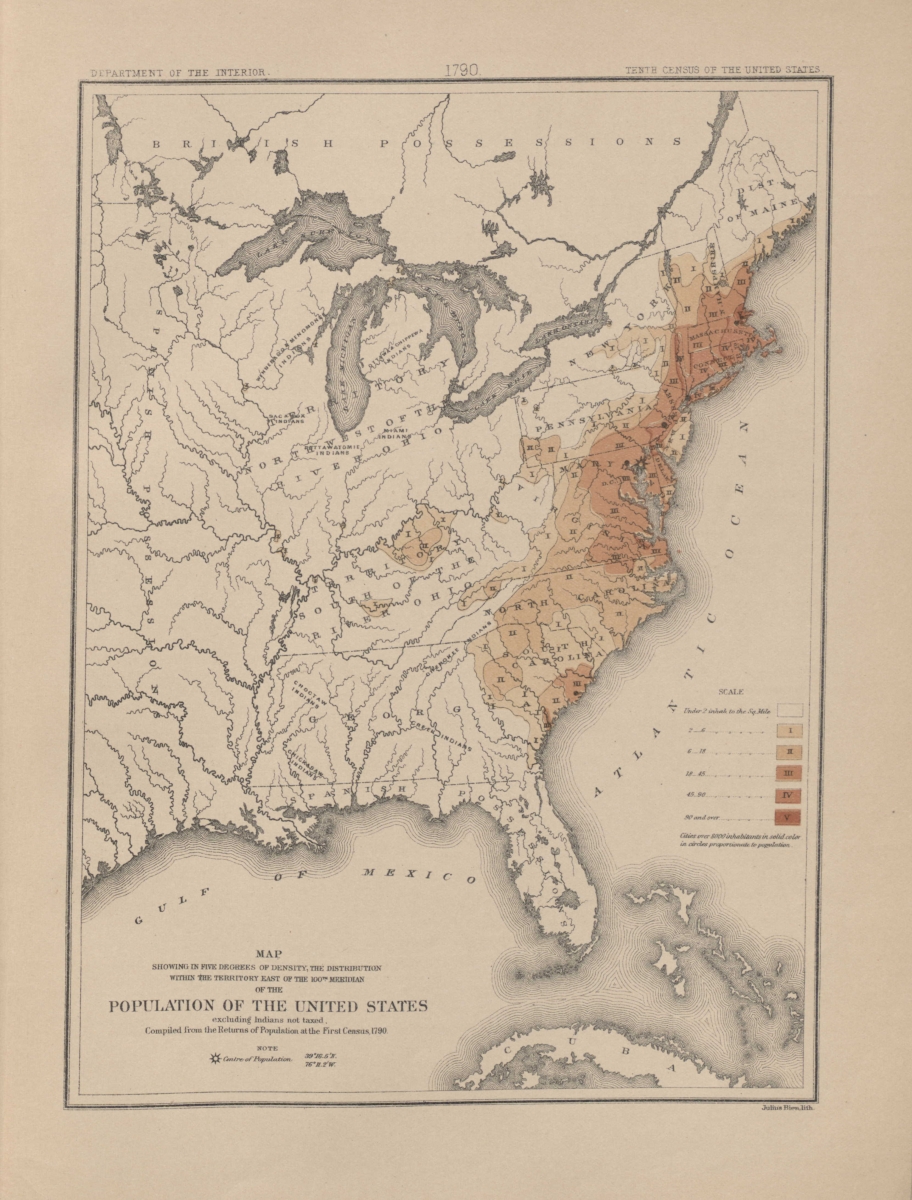U.S. Census - Tracing its Roots Back to Independence Hall in 1787
Related Posts
- Buy Tickets for The Constitutional Walking Tour of Philadelphia – See 20+ Sites on a Primary Overview of Independence Park, including the Liberty Bell and Independence Hall
- Independence Hall Tickets & Visitor Guide
- The President’s House: Slavery & Freedom in America’s Birthplace
- Constitution Day - American Freedom Essay Contest
In 2020, it will be time for another United States Census. While many people are aware that the Census is an initiative conducted by the United States to count the number of people living within the country, you may not be aware of how fundamental the Census is to the government of the United States of America. The results of the United States Census will be used to make many kinds of decisions, including from where funding appropriations are allocated and from where infrastructure is built. But most importantly, the Census determines how many seats each state gets in the U.S. House of Representatives.
Using the population of each state as determined by the Census to designate how many seats each state has in the U.S. House of Representatives is such a fundamental part of our country’s government that it is one of the very first topics mentioned in the United States Constitution. In Article 1, Section 2 of the Constitution, the Founding Fathers wrote:
"Representatives and direct Taxes shall be apportioned among the several States which may be included within this Union, according to their respective Numbers...The actual Enumeration shall be made within three Years after the first Meeting of the Congress of the United States, and within every subsequent Term of ten Years, in such Manner as they shall by Law direct."
When the Constitution was first adopted, there was no accurate count as to how many people lived in each state. As such, America’s Founding Fathers had to essentially guess how many people lived in each state in order to determine how many seats in Congress each state would receive. But for an issue as important as this, a guess would not suffice. That’s why the Constitution called for a Census to take place within three years of the first meeting of the Congress of the United States, and for a new Census to take place every 10 years thereafter.
Authorizing Legislation - 1790 Census
President George Washington, Vice President John Adams, and Speaker of the House of Representatives Frederick Muhlenberg signed the Census Act of 1790 on March 1, 1790. The law required that every household be visited, that completed Census schedules be posted in "two of the most public places within [each jurisdiction], there to remain for the inspection of all concerned...", and that "the aggregate amount of each description of persons" for every district be transmitted to the President. With minor modifications and extensions, the Census Act of 1790 governed Census taking through 1840.

The first U.S. Census began more than a year after the inauguration of President George Washington and shortly before the second session of the first Congress ended. Congress assigned responsibility for the 1790 Census to the Marshals of the U.S. judicial district courts. There were six inquiries for the 1790 Census which called for the name of the head of the family, and the number of persons in each household using the following descriptions:
- Free White males of 16 years and upward (to assess the country's industrial and military potential)
- Free White males under 16 years
- Free White females
- All other free persons
- Slaves
Thomas Jefferson, the U.S. Secretary of State oversaw the direction of the Census, and the Marshals conducted the original Census in the original 13 states, as well as the districts of Kentucky, Maine, Vermont, and the Southwest Territory (Tennessee). The results from the very first Census which took place almost 230 years ago are now available online at the US Census Bureau’s Web site along with every other Census taken throughout American history.

Authorizing Legislation - 1800 Census (Second Census)
On February 28, 1800, there was an act which authorized the Second Census of the United States, which was to include the states and territories northwest of the Ohio River and Mississippi Territory. The Census was to conclude within nine calendar months of its start.
The guidelines for the 1800 enumeration followed those of the first census, with only minor alterations in the law. John Marshall, secretary of state in 1800, was the nominal head of the 1800 Census operations. However, by early 1801, Marshall was serving as Chief Justice of the United States Supreme Court. As such, James Madison, Secretary of State, oversaw the final tabulations and reported population totals to Congress and the President of the United States.
The questionnaire for the Second Census separately tallied free white males and females in several age categories: under 10, 10 but under 15, 16 but under 25, 25 but under 45, and over 45. Indians, slaves, and free blacks were listed in single categories undivided into age groups.
Over Time
To date, the United States has taken 23 Censuses, and will begin its 24th Census next year. The Census Bureau also has published a fascinating Timeline of Census History from 1790-2010.
Apportionment
Once the Census has determined how many people reside in each state, Apportionment is the process of dividing the seats in the U.S. House of Representatives among the 50 states based on the population data collected during the decennial Census. The number of seats in the House has grown as the country has grown. The Constitution of the United States originally set the number of members of the House of Representatives at 65 from 1787 until the first Census of 1790, when the it was increased to 105 members. The Constitution also mandated at least one Representative for each state. After that initial Census count, each member in the House of Representatives represented about 34,000 constituents. Initially, the goal was to keep the number of constituents per representative at a consistent number, but as the country's population continued to grow, keeping the ratio of constituents per representative so low would have become a real challenge. If each member in the House of Representatives today represented the same number of constituents as they did in 1790, there would need to be over 9,500 members of Congress in the House of Representatives today. This would operationally be a problem, so as the time went on, the way the U.S. government apportioned congresspeople changed. In the Reapportionment Act of 1929, the decision was made to cap the number of representatives at 435 people.
But how does Apportionment actually work today? In 1941, Congress adopted the Method of Equal Proportions in an attempt to ensure fairness and keep the number of constituents per representative as equal as possible across state lines. The Method of Equal Proportions uses a number of complex equations to ensure equity. Because it can be a bit complicated to understand how these equations work, the U.S. Census Bureau created a great animated video to help explain how the Apportionment formula is used to ensure equal representation for all, just like the Founding Fathers had envisioned.
You can watch this cool video entitled, "The United States Census and the Amazing Apportionment Machine":
Independence Hall
While the details have changed throughout the years, the United States continues to use the same basic plan for representation that our Founding Fathers creatively devised over 230 years ago at the Constitutional Convention inside of Independence Hall. Today, The Constitutional Walking Tour visits Independence Hall so you can see the very location where our Founding Fathers devised the system which we use today to govern our country. Join one of our tours to see Independence Hall and more than 20 of America’s most important historic sites. For details on Independence Hall Tickets, please click here.



